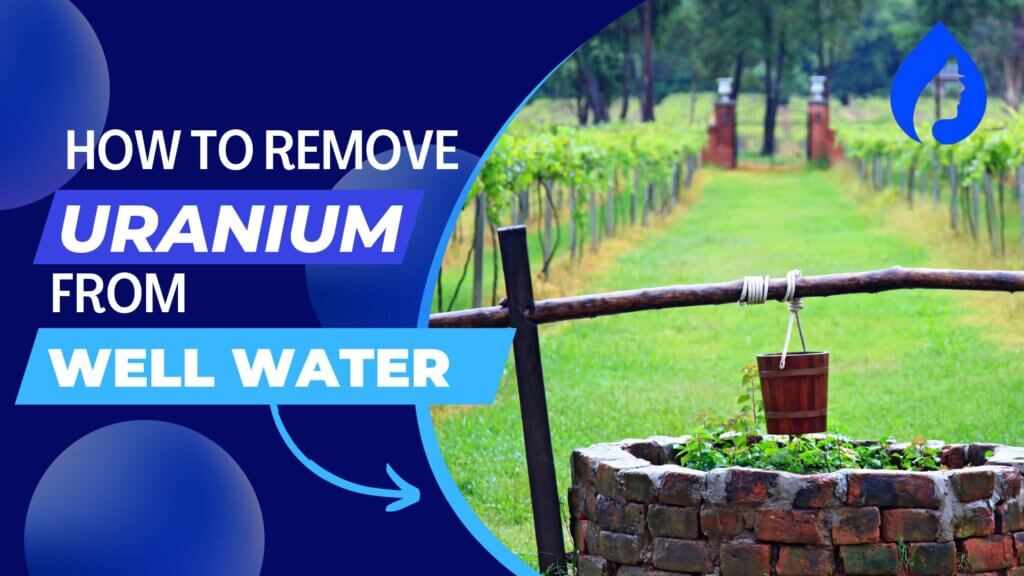
Did you test your well water and find uranium levels higher than 30 ug/L?
You must act immediately, as high uranium levels can cause kidney damage and pose a risk of cancer.
Here’s how to remove uranium from well water: Use POE reverse osmosis systems, but ion-exchange water softeners and distillers also work well.
Continue reading for a complete well-owner’s guide on uranium in well water.
How Do You Get Rid Of Uranium In Well Water?
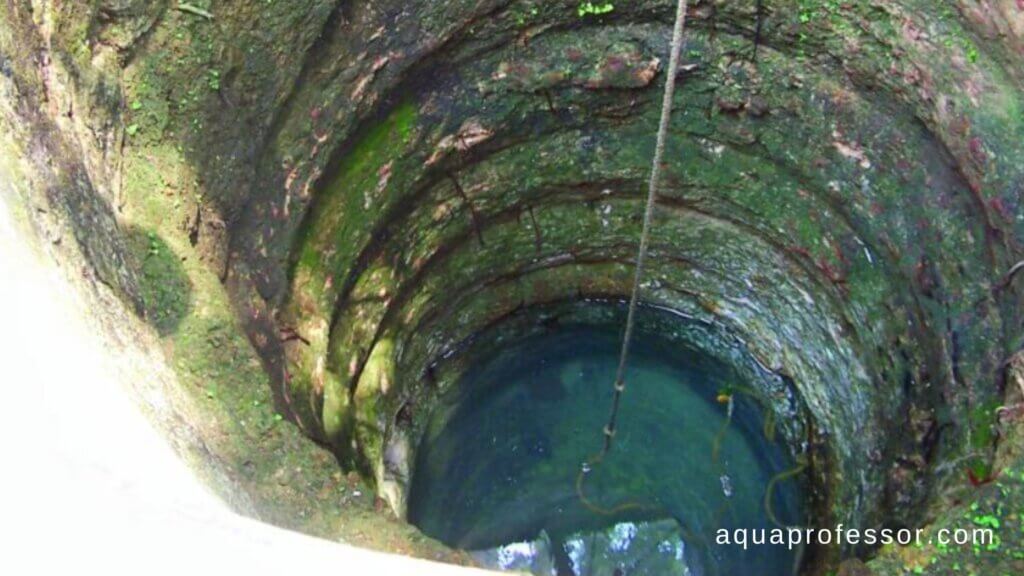
Here’s an important fact: No systems have received certification from the National Sanitation Foundation (NSF) for reducing uranium in water.
But don’t worry! Many reverse osmosis systems and salt-based water softeners have earned the esteemed certification for reducing radium, a derivative of decaying uranium.
Systems certified for reducing radium levels in water may also have the capability to minimize uranium from drinking water, as radium is a by-product of decaying uranium.
| Method | How it works | How effective is it? | How easy is it to use? | Cost to install and maintain |
| Reverse osmosis with carbon filtration | Water is first passed through a carbon filter, followed by RO. | 99% | Very easy | $500-$2,500 |
| Ion-exchange softeners with anion resin | Contaminated resin beads are regenerated by flushing with a sodium chloride solution | 95%+ | Easy | $100 and $300 |
| Steam distillation | Creating steam, then condensing back into purified liquid. | 95% | Difficult | around $100 |
RO With Carbon Filtration
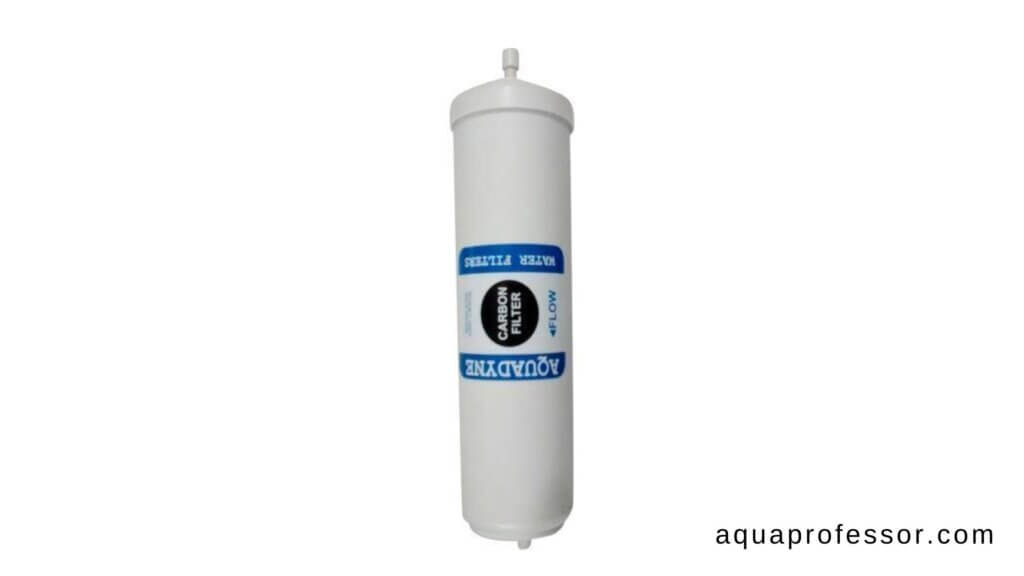
Reverse Osmosis (RO) is a process that involves forcing water through a semi-permeable membrane to remove impurities, including uranium. At the same time, carbon filtration is a method that uses activated carbon to adsorb contaminants, including uranium, from water.
How It Works
For private well owners, a reverse osmosis system and carbon filtration system can be installed to reduce uranium from their well water. The water is first passed through a carbon filter to remove as much uranium as possible, followed by RO to remove any remaining impurities. This combination provides a highly effective way to purify well water and ensure it is safe to drink.
How Easy Is It To Use?
RO systems with carbon filtration are easy to use, but regular monitoring and maintenance are essential to ensure their efficiency and safety. Once installed, the system operates automatically, and there is no need for manual intervention. The user simply needs to turn on the tap to get purified water.
Cost
Homeowners should expect to pay between $500 and $2,500 to install a reverse osmosis (RO) system with carbon filtration.
A simple RO system with carbon filtering for a whole house might cost between $1,000 and $1,500. Location, water quality, and the filtration system may impact the final price.
Costs for installation run between $600 and $3000. An RO water filtration system with carbon filtering may need yearly maintenance of $100-300.
Ion-Exchange Softeners With Anion Resin
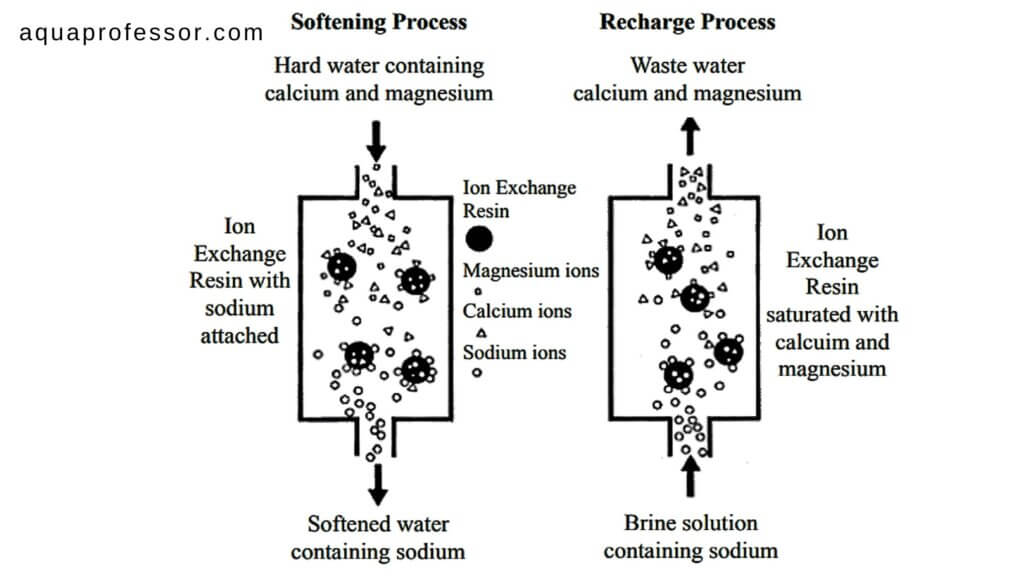
Ion-exchange softeners with anion resin filtration are another method private well owners can use to remove uranium concentrations from well water. In ion exchange systems, anion resin beads exchange ions in the water and remove positively charged contaminants, including uranium.
How It Works
How Easy Is It To Use?
Ion-exchange softeners with anion resin are relatively simple to operate and maintain, provided they are installed and maintained correctly. For example, regular backwashing and resin regeneration is needed to ensure the system’s performance.
Cost
A single-home unit ion exchange softener with anion resin filtration can range from $1,500 to $3,000.
A professional installation might cost anything from $500 to $3000.
Resin type, frequency of resin regeneration, and the cost of salt and other chemicals used in the regeneration process all affect the overall cost of maintenance.
An ion-exchange water softener may need yearly maintenance between $100 and $300.
Steam Distillation
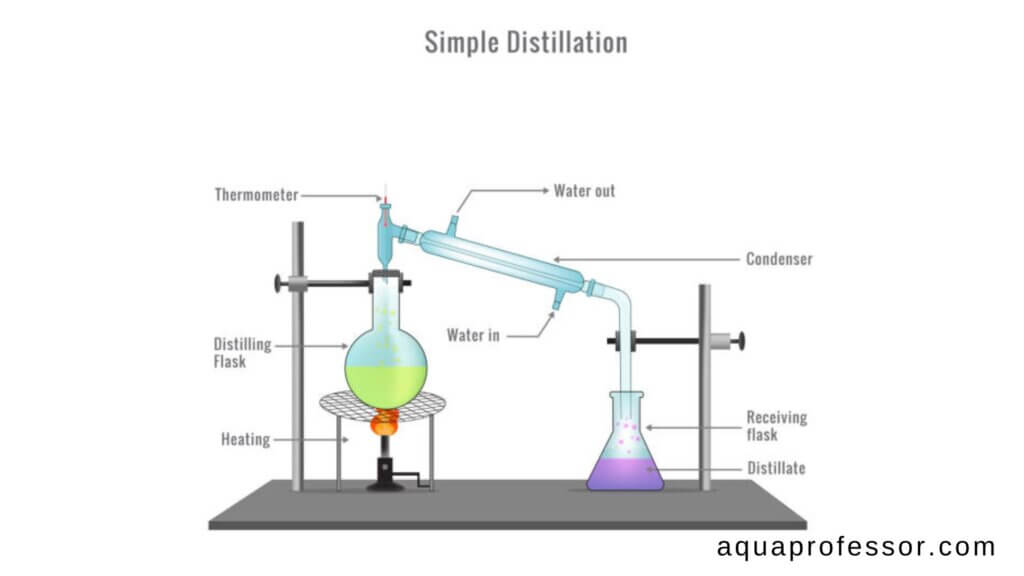
Steam distillation separates and purifies liquids by heating them to create steam, which is then condensed back into a purified liquid.
In water purification, steam distillation can remove most impurities, such as salts, minerals, and other dissolved contaminants. However, it is not typically used as the sole purification method, as it may not effectively remove all contaminants, such as heavy metals and organic pollutants.
How It Works
The process of steam distillation involves
How Easy Is It To Use?
Steam distillation is a complex process to remove contaminants that require specialized equipment and expertise to operate effectively. While it is possible to set up a small-scale, DIY steam distillation system, the process can be challenging and time-consuming, especially for those with limited experience with water treatment equipment or steam distillation.
Cost
For a small-scale, DIY steam distillation setup, costs can be relatively low, starting at around $100 or less for basic equipment and supplies.
However, for a larger, more sophisticated steam distillation system designed for commercial or industrial applications, costs can run into the thousands or tens of thousands of dollars.
| Methods | Pros | Cons |
| Reverse osmosis with carbon filtration | High Efficiency, Affordable, Low maintenance | Slow filtration rate, Removal of essential minerals |
| Ion-exchange softeners with anion resin | High Efficiency, Environmentally Friendly | High initial cost, Chances of system failure, Re |
| Steam distillation | Efficient separation of volatile components, Smooth process | Energy-intensive process, High equipment cost |
How Does Uranium Get In Well Water?
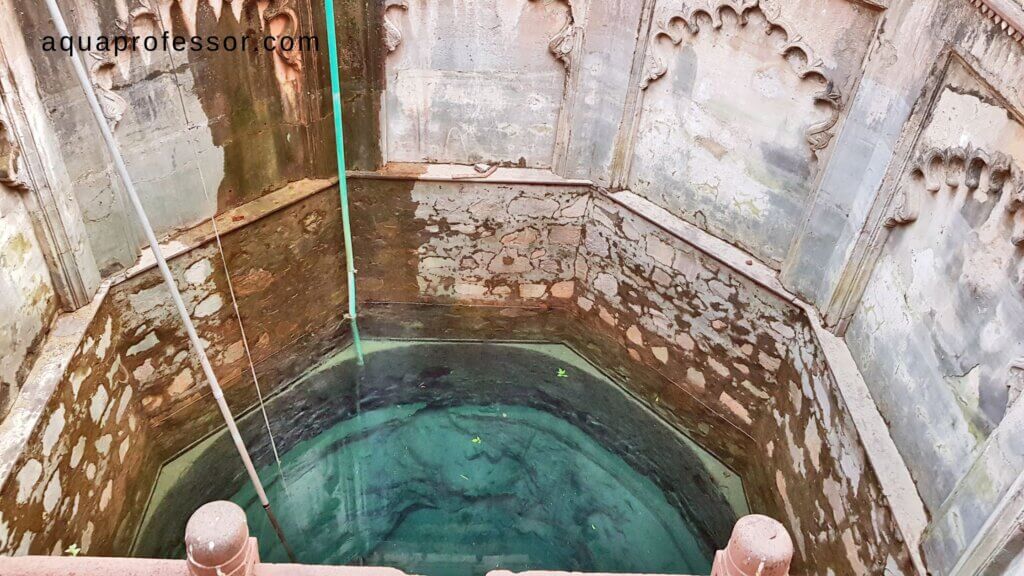
Uranium is a radioactive silver-colored metal with unique properties. Finding natural uranium in trace concentrations in rocks, soil, and water is possible.
There are several entry points for uranium into the water supply, such as:
Harmful Effects of Uranium In Drinking Water
Despite its radioactivity, uranium’s chemical characteristics in drinking water are more problematic. It is because the majority of uranium consumed is lost through the kidneys.
The severity of the health effects of uranium in drinking water depends on the level of uranium exposure and the length of time a person is exposed to elevated levels of uranium.
How To Detect Uranium In Well Water
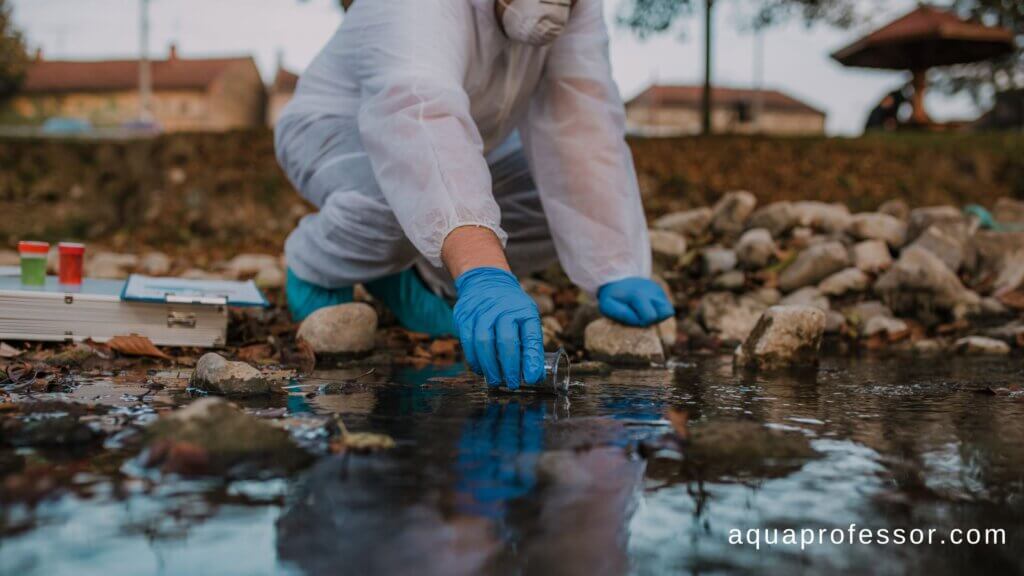
Uranium in well water can be detected by several methods, including:
Testing Kits:
Simple water testing kits are available that can detect the presence of uranium in water by using chemical reagents.
Laboratory Analysis:
The most accurate way to detect uranium in well water is to send a water sample to a laboratory of water treatment companies for analysis.
Expert Advice
The Tap Score Uranium Water Test is a good option for detecting uranium levels in water within five days. This test uses a simple procedure that the homeowner can complete.
Collect a water sample, and send it to the Tap Score laboratory, and the results will be delivered within five business days.
The Tap Score test provides accurate and reliable results and is a convenient way to determine the levels of uranium in your tap water.
Note:
It is important to note that testing for uranium in well water should be done once in 5 years, as elevated uranium levels can cause kidney failure, as mentioned earlier.
How To Remove Uranium From Well Water: FAQs
Can a water softener remove uranium?
Yes, a water softener can remove uranium from well water.
Water softeners exchange positively charged ions with sodium ions, such as calcium and magnesium. This process can also remove other contaminants, including uranium, from the water. However, it’s important to note that not all water softeners are designed to eliminate uranium.
Can you boil uranium out of water?
Boiling water is not an effective method for removing uranium from water. While boiling can kill off some bacteria, it does not eliminate dissolved minerals or radioactive elements.
Is uranium related to radium?
Yes, uranium and radium are related. Radium is a radioactive element that is part of the uranium decay series, meaning that it is formed from the decay of uranium in the environment. Radium decays further into other radioactive elements, releasing ionizing radiation.
Is bathing in uranium water harmful?
Bathing in uranium water is not harmful as uranium does not permeate the skin. The only way to get exposed to uranium is by drinking and cooking with uranium-contaminant water. However, it is recommended to avoid exposure to uranium-contaminated water and seek safe alternatives for bathing.
How much uranium is safe in drinking water?
The Environmental Protection Agency (EPA) has set a maximum contaminant level goal (MCLG) for uranium in drinking water of 0.03 milligrams per liter (mg/L) or 30 micrograms per liter (μg/L).

Naina has a profound understanding of how water quality affects our overall well-being. Her expertise is a guiding light for those seeking to live a healthy life. Besides raising awareness, her write-ups provide practical advice on identifying and mitigating water-related issues.
